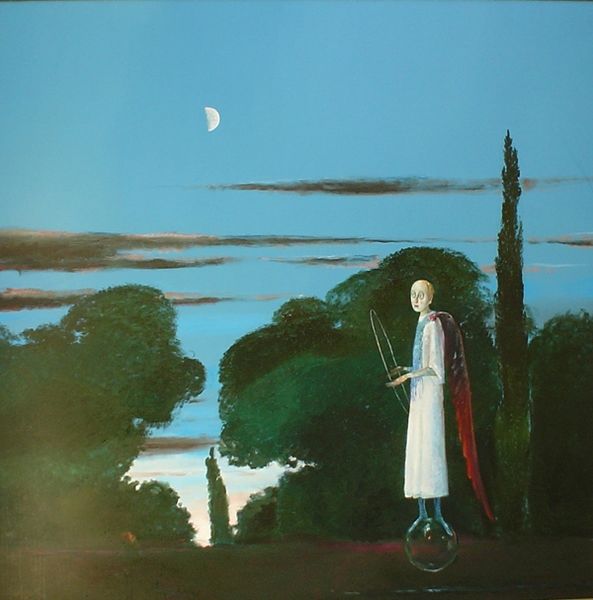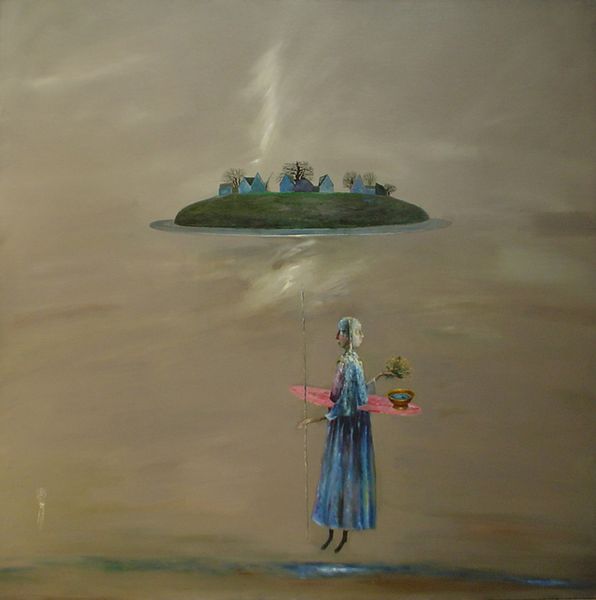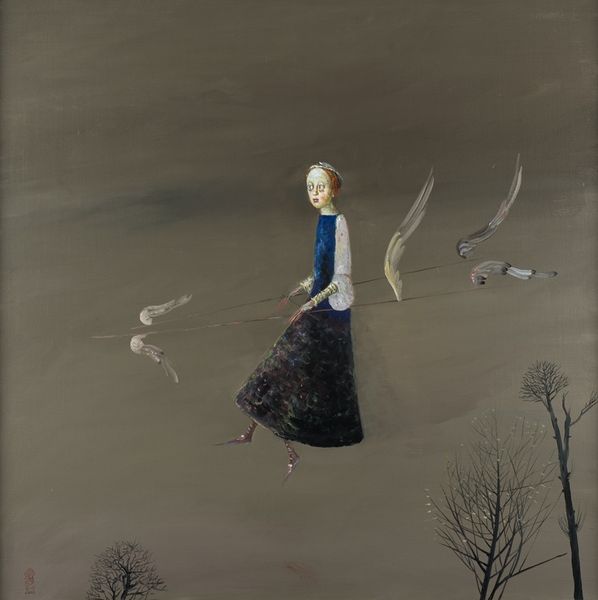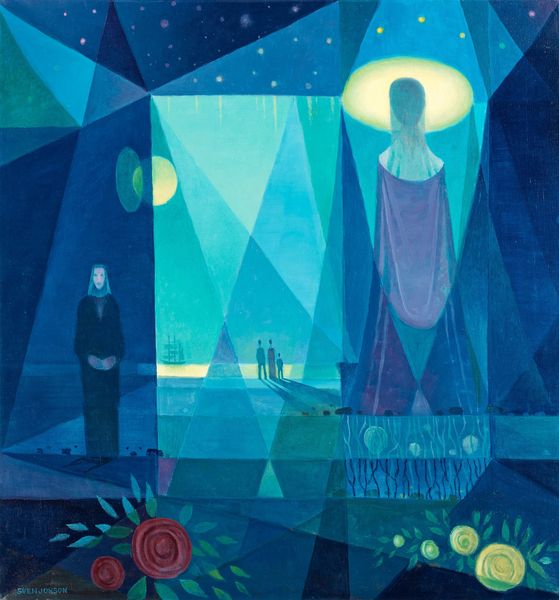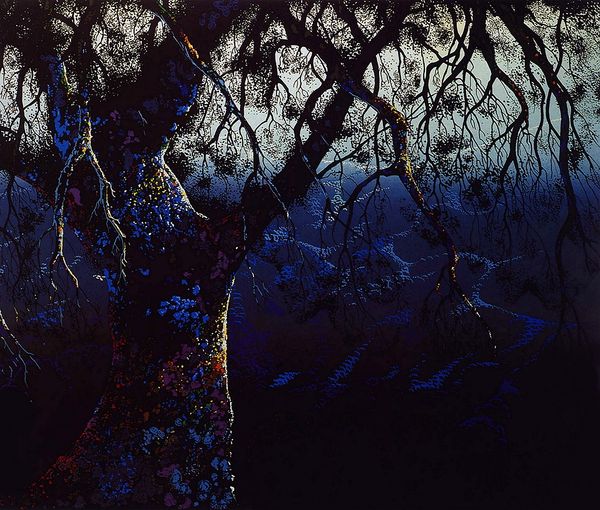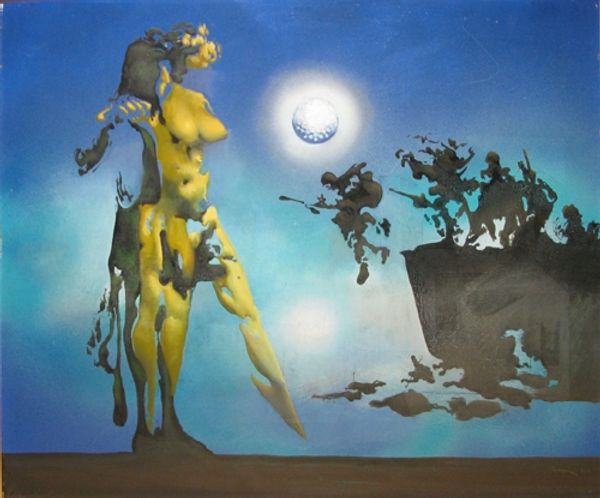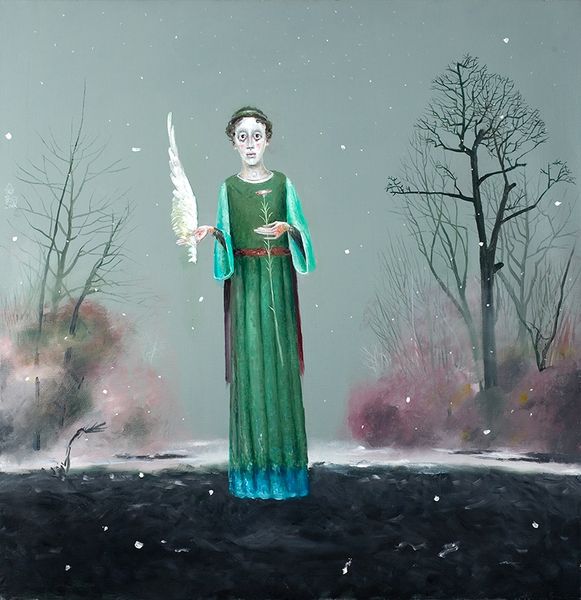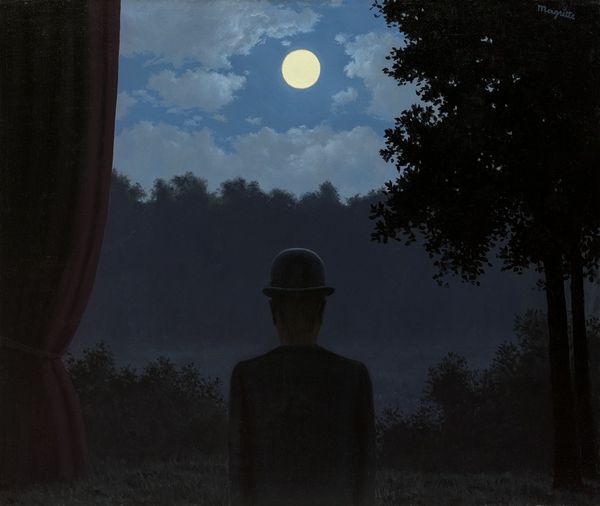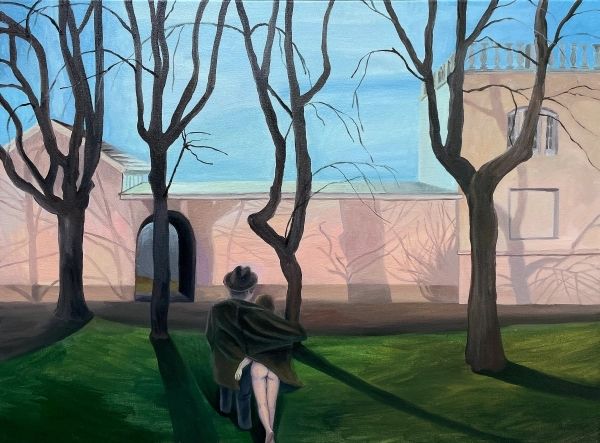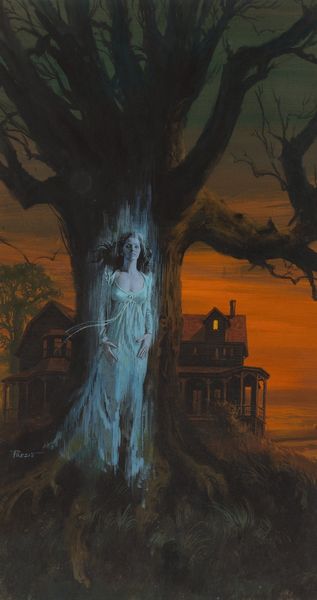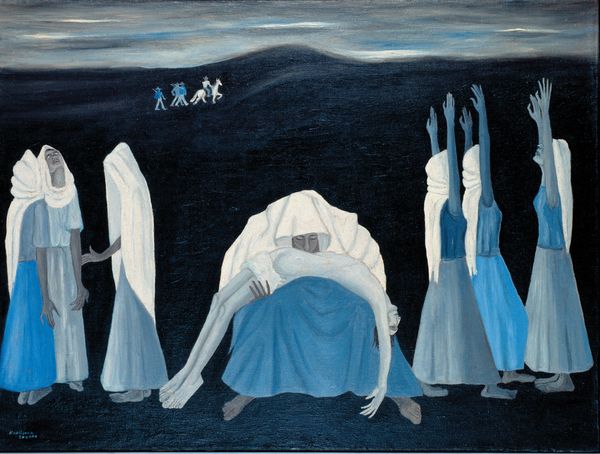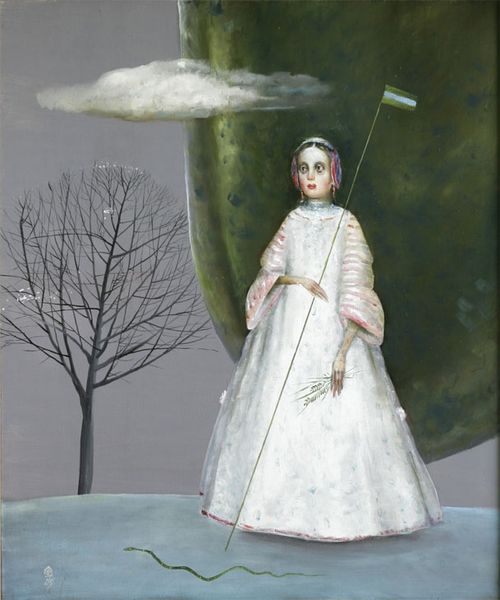
painting, acrylic-paint
#
tree
#
sky
#
negative space
#
green and blue tone
#
painting
#
landscape
#
acrylic-paint
#
figuration
#
water
#
surrealist
#
surrealism
Copyright: Stefan Caltia,Fair Use
Editor: This is Stefan Caltia's "The Magic Flute," painted in 2004 using acrylic. The scene gives a rather surreal impression; a pale figure stands under a tree against a deep blue background. What stands out to you in this piece? Curator: The immediate effect is indeed surreal, bordering on unsettling. Beyond the stylistic choices, though, I'm drawn to the work's engagement with themes of performance, identity, and perhaps even the gaze. "The Magic Flute," an opera steeped in Masonic symbolism and Enlightenment ideals, offers a fascinating lens. How might Caltia be using this operatic reference to comment on contemporary societal structures or power dynamics? Editor: That's interesting; I hadn't thought about the opera's symbolism. Could the figure represent a particular character or idea from the opera, filtered through a modern, perhaps critical, perspective? Curator: Precisely. Notice the figure's stark presentation—almost devoid of gender. Consider the tradition of costuming and performance in opera. Could this be a deliberate commentary on constructed identities, perhaps critiquing rigid gender roles perpetuated within such established art forms, even subverting expectations of gender, race, or class within the operatic tradition itself? What stories does the artist encourage or resist with their choices? Editor: So you're suggesting that Caltia may be using the familiar narrative of "The Magic Flute" to explore broader themes of identity and societal roles. The pared-down setting certainly contributes to that feeling of isolation and introspection. Curator: Exactly. And remember, surrealism, at its heart, is often a rebellion against established norms and expectations. Caltia, by placing this almost ghostly figure within a dreamlike landscape, may be challenging us to question the roles we play and the stories we inherit. Editor: I see what you mean. I’ll definitely need to research the opera’s history. This makes me consider how much history influences our interpretation of contemporary art. Curator: Absolutely, and it reminds us how artworks can act as vital dialogues between the past and the present.
Comments
No comments
Be the first to comment and join the conversation on the ultimate creative platform.
